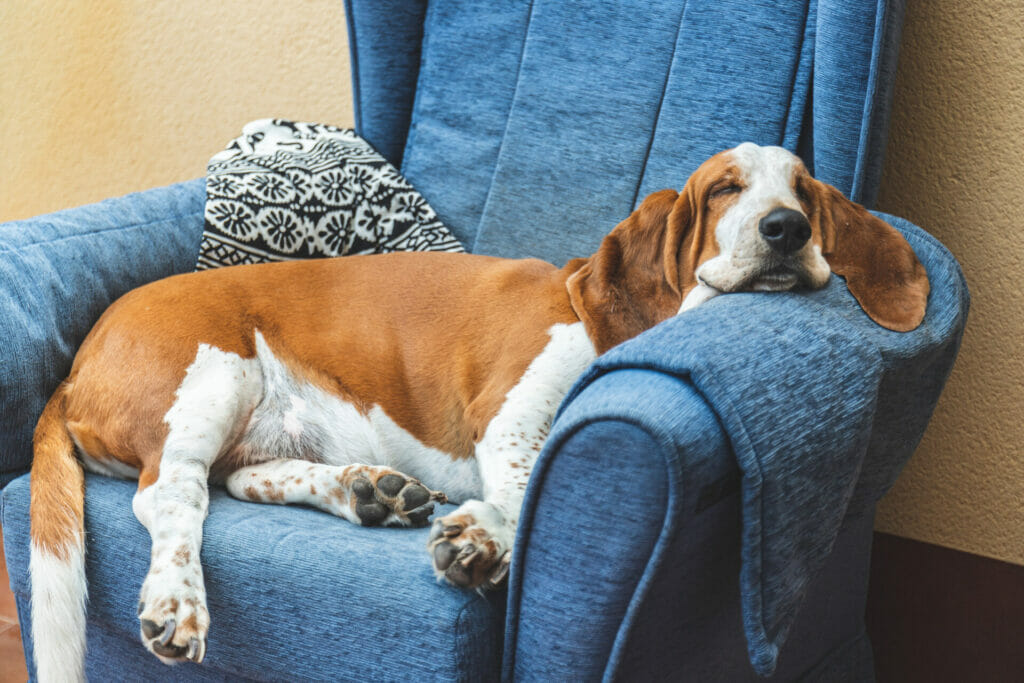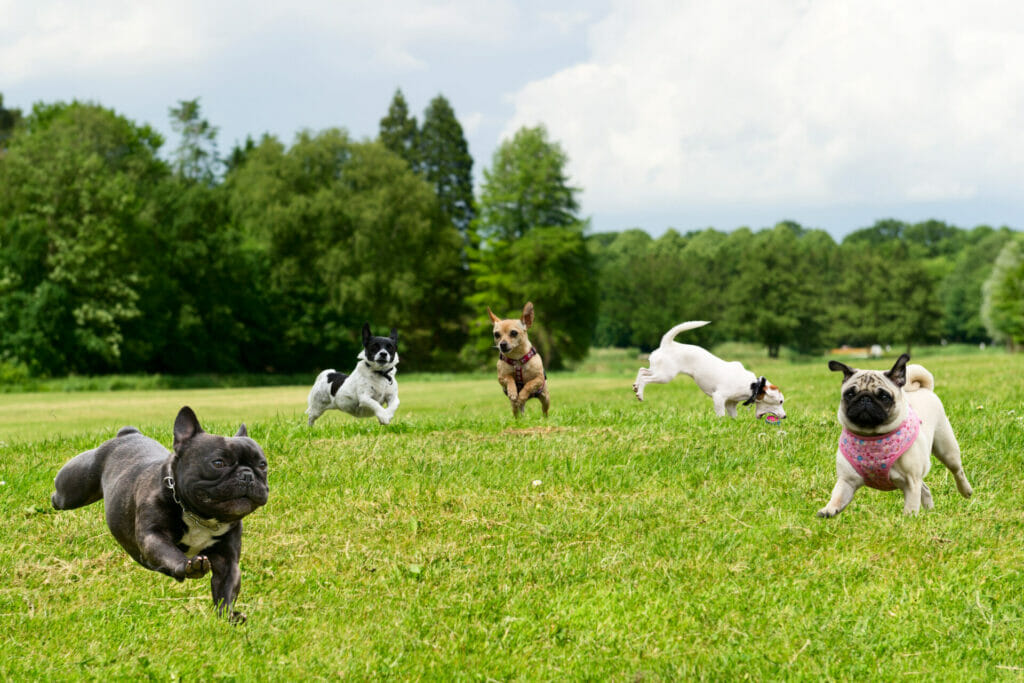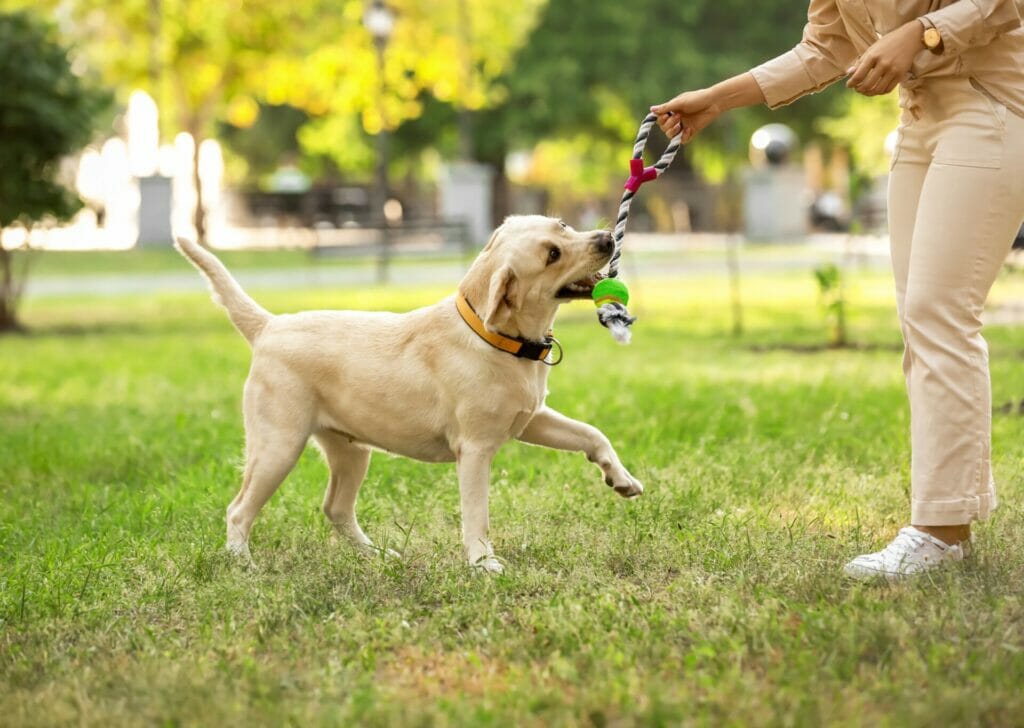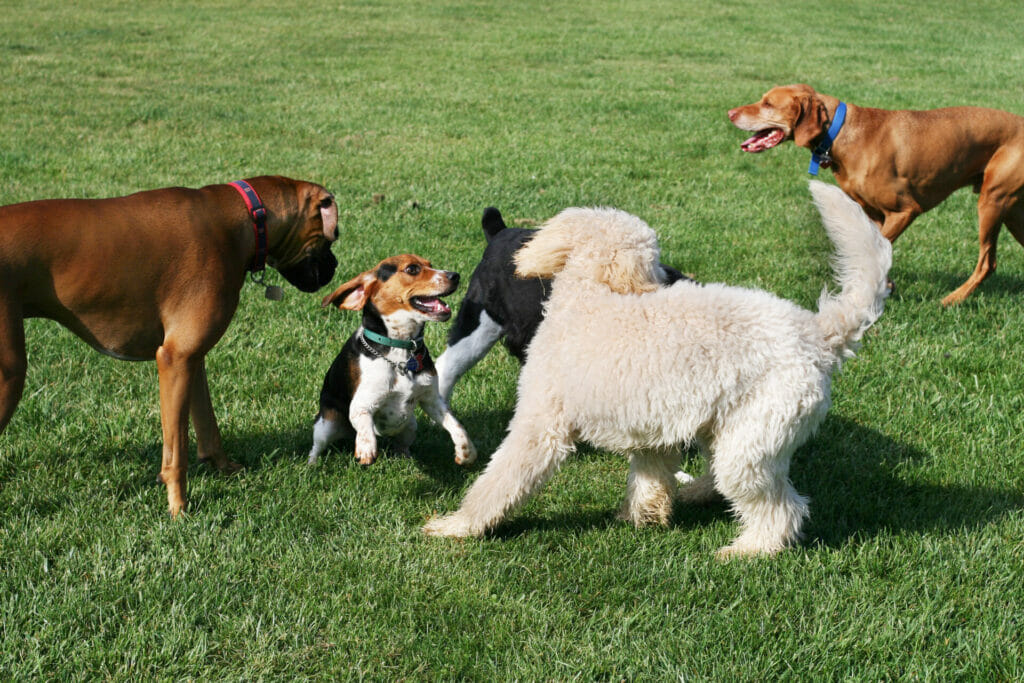Dog parks are a popular way to provide exercise and enrichment, especially for dogs living in large urban areas. Although many dog trainers (myself included) aren’t big fans of dog parks, they are something that many dog parents love. Not all dogs love dog parks, but for those who do, here are Dos and Don’ts of dog park etiquette to help you and your dog have more fun and stay safer while playing at your local dog park.
Do: Make sure your dog wants to be there
Before going to the dog park, consider whether it’s an experience your dog will enjoy. Many people think they should bring dogs to the park to play with other dogs when many dogs aren’t very interested in being there and may find parks stressful. This can lead to conflict between dogs and the worsening or developing behavior issues like dog reactivity. Even if you live in an apartment or don’t have a large yard, you don’t need to bring your dog to a dog park to get them exercise. Don’t feel pressured to bring your dog to a dog park if they find it stressful or agitating.

Don’t: Use the dog park as socialization
The dog park is best and safest when it allows highly social dogs to play together. If you have a dog who is wary, nervous, reactive, aggressive, or uncomfortable with meeting new dogs, or can be uncertain about other dogs, it’s best to avoid dog parks altogether. Instead, work with a trainer who utilizes positive reinforcement techniques who will help you to find a way to introduce your dog safely with treats, and appropriately to pre-elected other dogs of known temperaments. A dog being uncertain about other dogs can lead to significant conflicts in a dog park setting.

Do: Watch before going in
Key to good dog park etiquette, if you have a dog who enjoys the dog park, is to be thoughtful about when you go. The most crowded time of day may not be the best time to go with your dog. The busier the dog park is, the more likely incidents can occur. When you arrive, watch from the outside first to see how crowded the park is, how the dogs are engaging, and how their owners are intervening. Watch the way the dogs are playing together, and if you notice a mismatch in playstyles where rowdy dogs are picking on other dogs or rough play is being allowed to continue, don’t go in with your dog.
Do: Know the closest vet
Unfortunately, dog park related injuries aren’t uncommon. If you’re going to take your dog to play in a dog park, it’s a good idea to know where the closest emergency vet is located. Keep this information easily accessible along with your dog’s proof of vaccinations in case of a dog fight or just a play related injury.
Don’t: Stay on your phone
If you bring your dog to play in the dog park, it’s proper dog park etiquette to be sure that you are there to pay attention to your dog. Snapping a quick picture is fine, but don’t use your dog park time as an opportunity to respond to emails. Dog park play is safest when dog guardians are engaged and aware of what their dog is doing and how they are engaging with other dogs and people. When you are at the dog park, keep your phone in your pocket or bag to spend quality time with your dog.

Don’t: Get lost in conversation
Similar to keeping your phone put away, it’s essential to maintain focus on your dog while they are at the dog park. Although the social aspect for people is one of the big draws to dog park plays for many, it’s important not to get lost in conversation with your new dog parent friends. If you’re distracted, you might miss something going on with your dog, such as your dog bullying another dog or being bullied. Early intervention when play gets tense can help prevent fights from occurring.
Do: Pick up after your dog
Make sure you have bags when going to the dog park with your dog. When your dog goes, be sure to scoop up after them. Picking up your dog’s poop is not only polite, but it also helps to keep dog parks cleaner and more sanitary for all dogs who come to play in the park.
Do: Go to big dog parks
Not all dog parks are created equally. All dog parks come with risks, but the best dog parks will be fully fenced with a two-gate system to prevent dogs from rushing out of the dog park accidentally when someone else comes in. The safest dog parks are physically large and allow for dogs with different play styles and energy levels to engage and move away from dogs who they don’t like or who makes them uncomfortable.
Do: Watch body language
Dogs use body language to communicate clearly about how they are feeling. Dogs watch each other’s body language, and we should learn how to read it as well. Learning how to understand canine body language can help you to assess better how your dog is feeling about the dog park and can also help you to predict if trouble is brewing between dogs who are also in the park so you can leave with your dog before an incident occurs.
Do: Leave when your dog says they are done
When your dog seems tired or disinterested, that’s a cue to leave. It’s also a good idea to go if you see a fight break out (regardless of if your dog is involved in it) between dogs, as that’s a sign that the energy between dogs in the park has shifted which can lead to additional conflicts between dogs – not something you want your dog to experience! You should also leave if you notice that your dog seems uncomfortable, stressed, or nervous.
Do: Vaccinate
Before going to any dog park, ensure your dog has a clean bill of health from your veterinarian and is up to date on all vaccinations. At a dog park, your dog is going to come into close contact with a wide variety of dogs, and most dog parks don’t check vaccination status before dogs are allowed to come and play. Making sure that your dog’s vaccines are up to date can help spread diseases to other dogs and can help keep your dog healthy.
If you choose to bring your dog to the dog park to play, make sure that they are having fun, and staying safe while you are there.




















